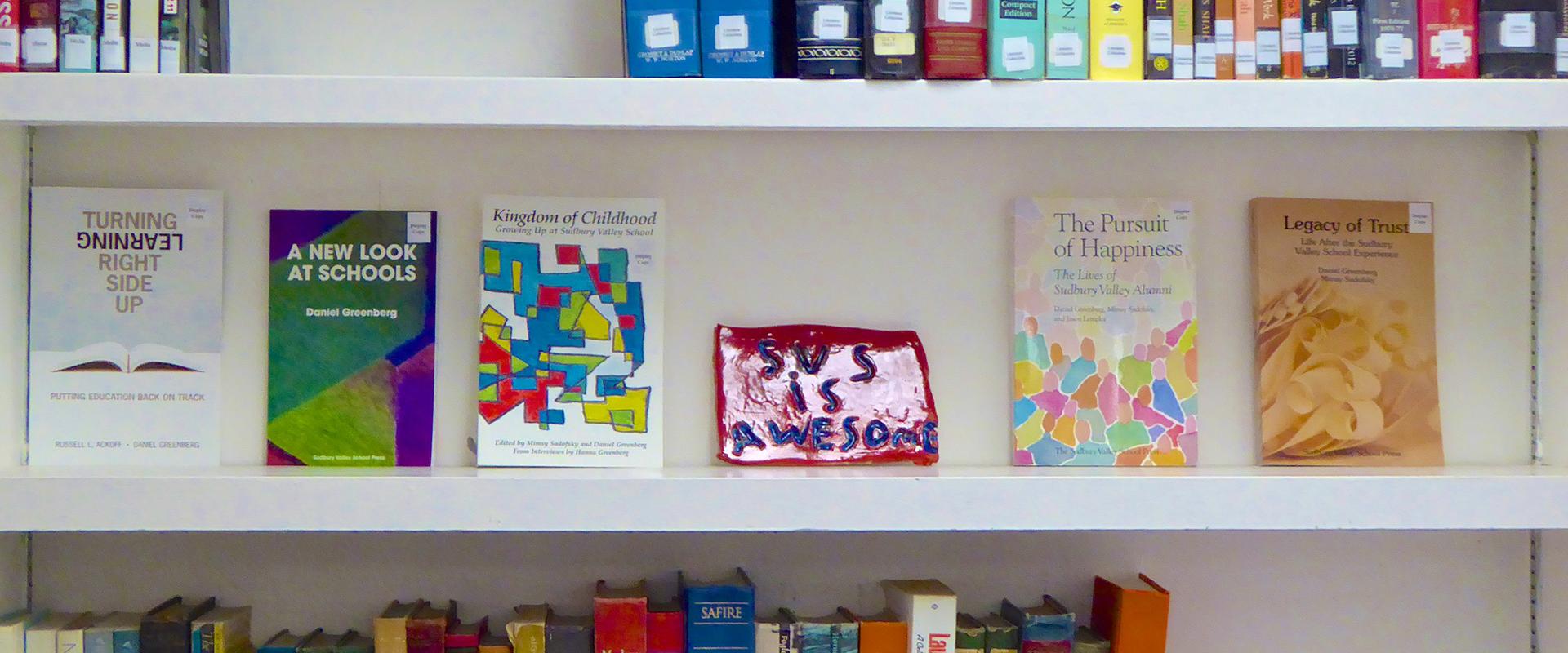This week's post was originally published as an essay in the Sudbury Valley School Journal (November, 2007) 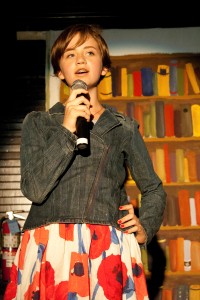
I. There are three activities everybody does regardless of culture: make music, decorate things, and talk. Talking, making music, and decorating things are the three things that seem to be basically hardwired into the brains of everybody, that seem to happen in every group no matter how large or how small. This passage contains an insight of particular significance for education, and underlies one of the universal features of Sudbury schools everywhere. For myself, I confess to being largely unaware of its import until a few years ago, and I would probably even now not appreciate how profound it is had I not been prepared for it by a curious event that took place a few years ago. I would like to tell you the story of that event, its aftermath, and the ensuing development in my understanding of the Sudbury model. 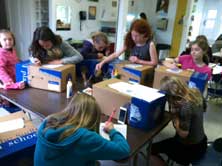
In the Spring of 2000 I addressed the (last) international conference on Learning in the 21st Century, sponsored by Arthur Andersen. The company at that time was still in possession of its excellent reputation as well as its reputation for being on the cutting edge. I talked about the ideas behind the school to an audience that included participants from all over the world, and was pleased to be received warmly. At the time, a distinguished Indian educator and government official, Dr. Manu Kulkarni, approached me, and expressed his delight at what he had heard. 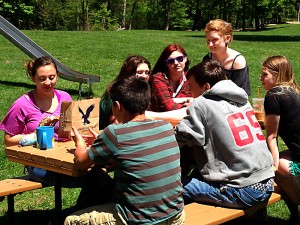
Some months later, I received by mail a book sent from India by Dr. Kulkarni. The inscription said, Presented to Daniel Greenberg . . . in appreciation of his radical thoughts on Learning in the 21st century, but the title, Art: The Basis of Education, seemed to contradict both the inscription and everything I had been advocating. The whole point of my talk, as might be expected, was that there is no particular subject which forms the basis of education. I was puzzled that as intelligent a person as the sender would expect me to welcome a book that appeared to champion a particular subject for instruction.
I laid the book aside. There it would have stayed, except for another accidental occurrence. It appears that Dr. Kulkarni has a relative in New Jersey whom he visits from time to time. In the summer of 2001 he was planning to visit, and he wrote that while he was here he would enjoy getting together.[3] The prospect of meeting him again face to face without having anything to say about the book he had kindly sent me made me scurry to pull it off my shelf, and take a look at it. I was in for one of the most pleasant surprises of my life, one which once again illustrated the old dictum, You cant tell a book from its cover (or from its title).
As soon as I saw the motto that headed the Preface, I knew that something special awaited me. It said, The artist is not a special kind of man but every man is a special kind of artist. Imagine, then, my delight when I read in the book such statements as the following:
If we ignore the inherent nature of children while planning educational programmes, we shall be imposing adult notions and objectives on them, which would mean not allowing them to fully enjoy their childhood in their own world and to grow accordingly. According to Indian folklore, a child taught without taking its instincts into consideration is like a caged parrot which has forgotten its own language, but can go on repeating the words taught to him by his master. The present system of education is an example of that very phenomenon i.e. teachers trying to turn children into parrots and depriving them of their childhood. . . . If children were not only allowed but also encouraged to remain in their own world as long as it was necessary for their natural course of development, they would grow into well-fulfilled persons. (pp. 42-43)
When someone learns something, it is not because that person has been taught, but because the person has learnt it himself or herself. . . . Indeed, there is no such concept as teaching in Indian culture. . . . [quoting Vinoba Bhave] >In none of the fourteen languages in which the Indian Constitution has been written the word teach exists; but there is a word for learn. There is no equivalent of the English verb, to teach, in Sanskrit or any of the other Indian languages. . . . It is the egocentricity of the teacher that he thinks that he can teach. As long as we cherish this pride, we will never be able to understand the essence of education. (pp. 96-97)
Genuine freedom is one of the greatest teachers. (p. 113) 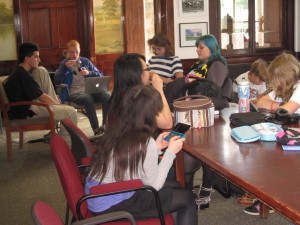
Children are looking for new experiences all the time, and want to examine and put everything to test that attracts their eyes or feelings. . . . Things that the child gets attracted to are often those which the adults either do not see or are not interested in. In short, there are two different worlds one is that of the adult and the other of the child. . . . It is not that the adult is unable to see the things in which the child gets interested. The point to note here is that at item may be the same but its function, even its form and the angle from which it is viewed, will be different from the child's point of view. (pp. 29-30)
But by far the most exciting feature of the book was its mention of the work done by an Austrian artist named Franz Cizek, which the author described as revolutionary in the field of children's creativity in practical terms, and which protected the child from adult domination. I had never heard of Cizek, which it turns out was very much my loss. Devi Prasad's book pays homage to this great pioneer, and directed my attention to the book that most extensively discusses Cizek's work and theories, Child Art, by Wilhelm Viola.[4] Thanks to Prasad and Viola, I have now been able to revel in the insights that flowed from Cizeks creative mind, and to appreciate one of the great, innovative thinkers, whose work presaged many of the key features of Sudbury Valley School.[5]
It turns out that Cizek formed a startup group to found a Sudbury model school! In the 1890's, in Vienna, the heart of the Austro-Hungarian empire! Here is how Viola tells the story:
Cizek came to Vienna [from Leitmeritz, a small town in Bohemia, then Austrian] when he was twenty [in 1885], and entered the Academy of Fine Arts. He lodged with a poor family, where, fortunately, there were children. These children saw him painting and drawing, and they wanted, as Cizek has so often related, >to play painter too. Out of his genuine love for children, one of the reasons of his success, he gave them what they asked for pencils, brushes, and paints. And beautiful works were created by them. It was a happy coincidence that Cizek was in close contact with the founders of the >Secession movement, a kind of revolution of young painters and architects against the old academic art. He showed his friends . . . the drawings of his children, and these artists were so thrilled that they encouraged Cizek to open what they scarcely liked only to call a school, but for which they had no other name. There children should be allowed, for the first time, to do what they liked [emphasis added]. (pp. 11-12)
Needless to say, the authorities did not go for the idea, based as it was on (in Cizeks words) the concept To let the children grow, develop, and mature. He did, however, manage to open a Juvenile Art Class based on the same principles which, since it did not depend on government funding, did not suffer from state interference.
Cizek continued to promulgate the radical ideas that arose from his eye-opening experience while still a young art student. Violas book contains several extraordinary quotes from Cizek's conversations and lectures[6], some of which deserve to be recalled here:
How do you do it? [asked by his interlocutor, Francesca M. Wilson]
But I don't do it. I take off the lid, and other art masters clap the lid on that's the only difference. But you must show them some things; you must at some time have pointed out to them their mistakes in proportion. Don't you point it out so that the child should learn and improve? 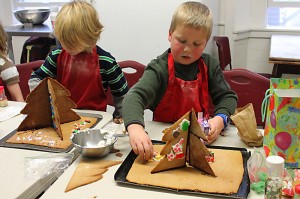
But on the contrary. Children have their own laws which they must needs obey. What right have grown-ups to interfere? People should draw as they feel.
The most beautiful things in the creating of the child are his mistakes. The more a child's work is full of these individual mistakes the more wonderful it is. And the more a teacher removes them from the child's work the duller, more desolate and impersonal it becomes.
Young children usually are more sensible that teachers and parents suppose. Their brains are still fresh, they conceive many things in the shortest time which grown-ups do not understand, for they are too anxious.[7]
And, finally and amazingly, consider this insight of Cizek's into parenting:
There are three types of parents first, those who are always fussing after their children, controlling and correcting them and trying to make them walk in the same paths as themselves; then the infinitely preferable variety, who neglect their children altogether; and lastly, the ideal kind, who watch their children from a distance and are ready with encouragement and friendship when that is needed. (Viola, p. 35)[8] 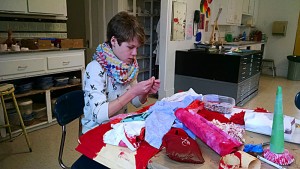
II. Cizek had used art as the point of entry of his thinking into a whole new world of education an avenue that never occurred to me. He realized that children by nature are capable of real, indeed often great, art; that artistic activity is natural for them; and that adult interference in the natural development of children as artists was detrimental to that development. From that starting point, he made a leap into the entire realm of education and child development, concluding that the natural, unhindered growth of children enables them to reach their full potential as human beings, and that adult interference in general is more of a liability than an asset in this process of growth. That leap, from art to all domains of maturation, was an intuitive one for Cizek and his followers. It was not until I read Michaels article referred to in the opening paragraph of this essay that I not only gained an understanding of the real basis for Cizek's intuitive leap, but I also achieved a new and enriching perspective on the underlying basis for the Sudbury model and, as a bonus, an understanding of a feature of Sudbury Valley that I had hitherto hardly noticed. 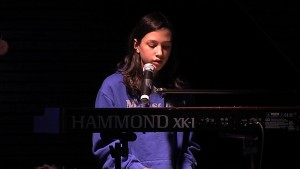
The key is the observation that certain activities are universal, trans-cultural, and therefore related to the very essence of being a human. Even more significant and telling and here once again Cizek hit upon the truth, albeit not consciously is the fact that these same activities are engaged in by children from the earliest age, and therefore are not, indeed cannot be, the products of sociocultural influences. This places these activities in the realm of biological evolution, rather than the realm of cultural history.[9] And because the three activities listed by Michael are the outcome of hundreds of millions of years of evolution, they must represent in and of themselves an important aspect of the exalted place humans occupy in the natural world. In other words, these activities not only represent the outcome of evolution, but they represent important features that account for the specific place homo sapiens occupies in the natural order. 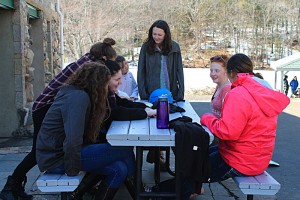
To allow children and indeed adults as well to engage in these three activities to their hearts desire is to allow them to realize their fullest potential as human beings. External interference in their exercise, while perhaps sometimes justifiable for social reasons (man is, after all, a social animal as well, another aspect of evolution), always involves some diminishing of their ability to become what they by nature are destined to be.
Once this is realized, it is almost impossible to comprehend the enthusiasm with which educators and child development specialists advocate systems for coercing children, against their clear inclination and will, to curtail these activities in favor of an externally imposed adult agenda. While there may have been some economic justification for such curtailment in the Industrial Age a subject much commented upon there is no longer the slightest pretext of an advantage gained through the suppression of the natural, evolved behavior of children. 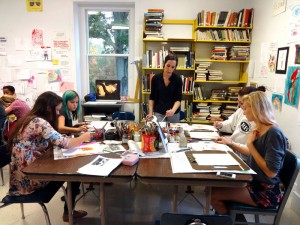
The Sudbury model of schooling puts this simple observation into practice, without qualification. In this way, at a single stroke, by eliminating Industrial Age curtailments, Sudbury schools provide an environment in which all children can develop to their highest innate potential.
In light of all that has been said, one would expect to find these three activities dominant in all Sudbury schools. In fact, that is exactly the case. In Sudbury Valley, everywhere you look you see children talking, listening to or making music, and participating in a variety of artistic enterprises (drawing, painting, photographing, looking at pictures). After reading Prasad/Viola/Cizek, I suddenly noticed the obvious for the first time: SVS is a hotbed of activity in the arts. Before I encountered these authors, I had realized that artists seemed to flourish here; indeed, our oldest son, who went to no other school, became an artist here. After my encounter, and the thinking that ensued, I came to understand that the arts are not just another feature of the school, they are an integral and central part of the school. As a verbal person, I had grasped that fact much earlier when it came to talking, to making conversation. Now I finally had the whole picture, and the underlying reason was human nature.
III. Well, not quite the whole picture. Michael left out two other trans-cultural activities: play, and curious exploration. Both of these are engaged in by all people everywhere, and by children from the earliest age. They belong side by side with the three previously listed making music, decorating, and conversing.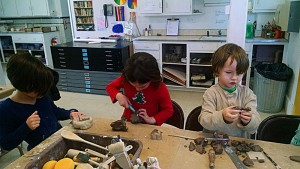
That play and curiosity are an essential aspect of human nature, and a key product of biological evolution, has been realized for a long time. Aristotle clearly recognized the place of curiosity as the source of all innovation and creativity, and many observers had commented on the importance of play. At SVS, from the earliest times, we certainly accentuated the centrality of both activities, and our appreciation of their role deepened with the passing of time.[10]
The significance of all five aforementioned activities in the evolutionary scheme can be even more adequately appreciated when one realizes that all of them exist, in one form or another, in other species, but that none of them exists at a level of complexity that is attained in human beings. Other animals play, though only a few continue to do so as adults, and none have developed the panoply of intricate games that people have invented. Other animals communicate using sounds, though none has created languages with syntax, grammar, structure, and vocabulary that even remotely approach that of the most primitive human language. Other animals poke around curiously in their surroundings, though none has taken curious exploration to the lengths taken by humans. Other animals make noises of varying pitch and intensity that can certainly be called music, but none compose sonatas or symphonies. Some other animals find ways to adorn themselves, but none with the diverse means of expression developed by humans. These five activities not only are integral to being human, but the extent to which humans have developed them on their own initiative shows that evolution has endowed them with special significance as indicators of, and indeed the chief architects of, the dominance of the human race on this planet earth.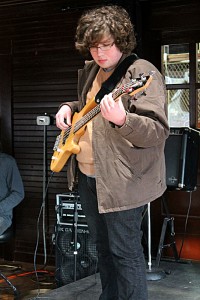
Footnotes:
[1]. Michael Greenberg, The Magic of Conversation (The Sudbury Valley School Journal, June 2001); reprinted in Michael Greenberg, The View from Inside (The Sudbury Valley School Press; Framingham, 2002), p. 23. He goes on to say: "The fact is that people invent their own languages, no matter how tiny the group; all have a very specific way of decorating their pottery or their bodies or something whatever it is they can decorate, they decorate; and all have some kind of music that comes out of their own experience. To me, this says these are three modes of expression that almost tumble out of the human brain unbidden, as it were. They're just part of who we are."
[2]. By Devi Prasad (National Book Trust, India; New Delhi, 1998)
[3]. As it turns out, he never did get an opportunity to come up to Massachusetts.
[4]. University of London Press; Bickley, Kent, 1942. Getting a copy of this book was no easy matter, although it is unquestionably a classic in its field.
[5]. The others known to me at present were A.S. Neill, whose Summerhill school is well known, and whose work dates from the 1920's on; and Lev Tolstoy, whose amazing insights can be read in Tolstoy on Education: Tolstoy's educational writings 1861-62, selected and edited by Alan Pinch and Michael Armstrong, and translated by Alan Pinch (Fairleigh Dickinson University Press; Rutherford, 1982) another book not easy to come by. It is remarkable that the essays on education written by such an eminent author as Tolstoy are not more widely known and read, but perhaps it is understandable that admirers of Tolstoy the author are a bit embarrassed by his radical views on the subject, which are so contrary to the mainstream, as was his experimental school, which unfortunately lasted only a very short time.
[6]. Cizek himself never completed his projected book, for which he had received funding from Yale University Press. He died before it was completed, and whatever notes or manuscript material he may have developed never saw the light of day. Everything we know of his thoughts comes via the recollections of others.
[7]. All the quotes are from Chapter IV of Viola's book, From Talks with Cizek, pp. 32ff.
[8]. I cannot resist although it is off the subject of this essay adding some insights of Viola into the role of the teacher, which so clearly applies to that of a staff member in a Sudbury school. In his Chapter V, The Teacher (pp. 35ff.), he has the following to say: "The most important function of the teacher in an art room, and perhaps in every other school room also, is to create a creative atmosphere. If he succeeds in that, half the game is won. How this creative atmosphere is produced is an almost entirely personal matter. You must take the child seriously. He knows at once if you take him seriously or not. But it has no sense quite apart from the moral side to simulate. We should give significance to the child and to the work he creates. This does not mean boundless praise. A lukewarm atmosphere is the right one for a child. Cold, negative criticism is deadly, but extravagant praising is not without danger. In presence of a miracle of beauty in a child's work one feels sometimes one must shout, It is marvellous what you have done. That's as beautiful as van Gogh or Gauguin.' But one uses more modest words. It should be restrained praise, giving the child the feeling that it is quite natural for him to have done such a good picture. Still, if a teacher is rather inclined to take for granted everything good the child does, the danger is greater that he may give too little than too much appreciation. Paradoxically as it may sound, help as little as possible. The question arises whether the adult should or can help at all. We believe in the indirect method. Sometimes a word will be sufficient, a look, a nod. All this is much more exhausting than the old scheme. It is superstitious to think that Cizeks method makes life more comfortable for the teacher. Almost the opposite is true. Cizek himself after one and a half or two hours of work with his children was exhausted, and that after fifty years of practical experience. " (All the emphases are in the original.)
[9]. Here is how Michael puts it (ibid.): The rest [i.e., other than music, art, and conversation] is up for grabs. Not every culture by a long shot even has writing. . . . The rest is technology, so to speak. that is, the rest is a second-order cultural creation, rather than an inherent human trait.
[1o]. See, for example, my book A Clearer View (The Sudbury Valley School Press; Framingham, 2000), where play is discussed at length, as is conversation.
